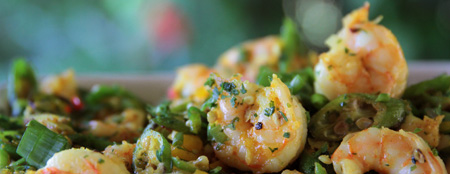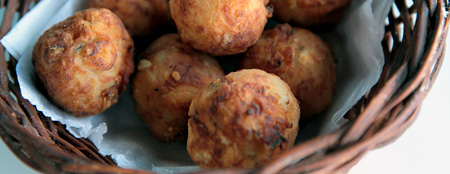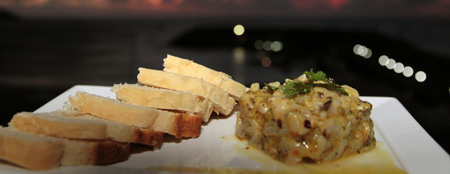Cacimba Bistrô
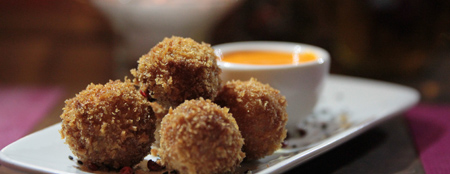
One of the island's most recent culinary enterprises, Cacimba Bistrô, located on the charming Vila dos Remédios, is one of
journalist Ana Clara Marinho's new ventures with chef Auricélio Romão. As a native of Rio Grande do Norte, he is the archipelago's
gastronomical ambassador and also responsible for the hip Varanda Restaurant, which is part of this guide. Here, there's a more
intimate feel, for couples and groups of friends to relish these delicacies on floor-level tables with comfy pillows. The menu has
a French inspiration with dabs of Brazilian culture and the dishes honor celebrities who often spend their vacations in Noronha and
some of the chef's friends.
Telenovela heartthrob Bruno Gagliasso, maybe the most noronhense of all Globo actors, became a flavorful pastry with creamy
lobster filling (R$ 39), for example. He shares attention for appetizers alongside the Beef jerky balls with squash and sweet pepper
(R$ 29). Bruno's wife, the actress Giovanna Ewbank is praised here in a grilled lobster dish with caper and curry butter served with
coconut rice and crunchy farofa, which is sautéed manioc flour (R$ 139).
"When they visit my restaurants, I ask them what they like to eat. Thence comes my inspiration. Last time he came to Noronha,
journalist Patrícia Poeta's husband commented that she's crazy for breaded shrimp. That was the hint I needed", recalls Auri. Thus
emerged the bistro's two main dishes. In honor of Jornal Nacional's anchorwoman, the Shrimp à la Patrícia Poeta (R$ 58) is dipped in
bread flour with almonds and cashews, then served with sweet pepper sauce. Fernanda Abreu, on the other hand, became a salad of mixed
leaves, chicken slices marinated in curry, and chunks of green apple with mango (R$ 42).
As a berry lover, businesswoman Maria do Céu is honored in a salad of flambéed shrimp in olive oil and berries, with a mix of green
leaves (R$ 54). Fellow chefs are also remembered here: by Auricélio's hands, Zé Maria Sultanum becomes a ceviche, Hea Soun Shin (Rê)
turns into crunchy sardines breaded in special flour and peppered honey sauce (R$ 32), whereas the fish fillet with shrimps in coconut
and ginger (R$ 75) are a tribute to César Santos.
At Cacimba, Auricélio also ventures more into pasta and risottos. The spicy Penne (R$ 69) mixes seafood in a red sauce. The Creamy
Shrimp Risotto (R$ 72) has al dente wild rice in a cheese sauce with ginger and sesame. "I want to go on creating. I'm thinking of
having an exchange period with chef Thiago Freitas (from Thaal Cuisine) to search for inspiration in Thai dishes, but without losing
the essence in my northeastern cuisine" highlights Auri.
Pousada Zé Maria
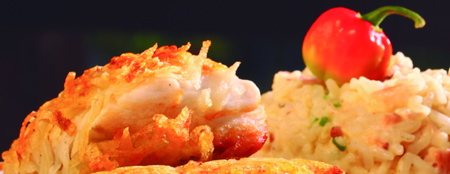
Businessman and chef Zé Maria Sultanum, a live symbol for Fernando de Noronha, is responsible for a large contingency of workout
aficionados leaving their diet when they visit the archipelago. The inn's Culinary Festival, which takes place on Wednesdays and
Saturdays, from 8 PM to midnight, may be considered the "Babete Banquet" of Pernambuco's heaven. It's over 40 options of hot dishes
per night, presented in a detailed and energetic ritual. Since it's practically impossible to taste everything, pay attention to the
host's suggestions.
The humongous seafood paella with a stream of shrimp is a must at the buffet. There's no lack of full fish wrapped in banana
leaves or in crusts of salt, farofa (the stale bread with crunchy garlic is delightful) and assorted types of rice (the one with
jackfruit is one of Zé Maria's darlings). The northeastern beef jerky with curd cheese, mini crabs, and shrimp in squash are also
among the most coveted items on the table. A special note also goes to the sushis and sashimis served inside their own fish. At the
end of the night, the table is reset with deserts: local fruits make mousses, cakes, flans, and chocolate sweets. The feast costs
R$ 149 per person and it's requested that reservations be placed with good timing (check out the telephone on our Services tab),
for even guests may have to stay out if they don't act fast enough.
But if you can't make it to the festival, no drama. The restaurant at Zé Maria's Inn is also open daily for guests and visitors.
The menu includes an impressive selection of 118 dishes, elaborated by the innkeeper himself with the help of his son, Tuca Sultanum.
"I'm crazy about parmigiana fillet and this one takes my name. It's the best in the world!" believes Tuca. All prices in the menu
end in "8", as a result of Zé's spiritualist superstition. "I believe that this is the 'exact' number. Just as I believe that it
will help you choose just what you want among so many options," commented the innkeeper.
National celebrities, friends, and family are all remembered in some of the house specials. Datena's spicy shrimp (R$ 84,98), for
example, is a tribute to the famous police journalist. The acting couple Giovanna Ewbank and Bruno Gagliasso are represented by a fish
in mint sauce with squid and grilled banana rice (R$ 69,98). Pernambuco's ex-governor, Eduardo Campos, has his name in a dish of
jackfruit rice with jambú herb and sesame seeds (R$ 9,98). The menu also includes a myriad of pizzas, sushis, gourmet sandwiches, and
desserts. The special drinks deserve a chapter just for themselves. Vivi Volante's Perfect Love (R$ 44,98), for example comes in a
pineapple, with vodka, cointreau, fruit juice, and sweetened condensed milk, whereas Patrick Müller's Caipinha (R$ 29,98) takes
Absolut vodka, mangoes, strawberries, kiwis, and lemongrass extract.
From the restaurant's balcony, customers can see Zé Maria's "living salad". In his own hydroponic garden, he plants lettuce,
arugula, and even the cucumber that goes in the sunomono seafood salad and vegetable salads that have been part of the restaurant
for almost 10 proud years. Apart from supplying his own inn, Zé's production matches the demand of many of the island's
restaurants.
Eco Pousada Teju Açu
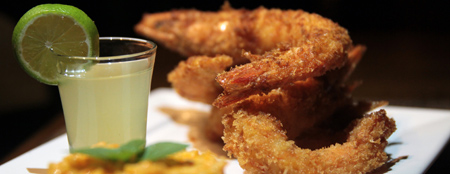
The Teju Açu Eco-Inn is one of the island's most coveted spots, and not by chance. Situated in the middle of Boldró, it was made
entirely from planted wood. Its application of solar energy to water heating also attests its commitment to sustainability. The
restaurant, cropped on a charming balcony, is open to visitors and packed during dinnertime. The contemporary kitchen here is
headed with skill by chef Lívia Vasconcelos.
Lívia's timid ways might fool even the utmost skeptic. At 24, this girl is a real hurricane at the stove. Graduated in culinary
arts from UniNassau and Senac, she had the opportunity of interning with the renowned chef Alex Atalla from São Paulo and wonderful
people of the local cuisine, such as Erick Damasceno and Leandro Ricardo. "Whenever I can, I go to Recife to participate in culinary
events. My favorite pastime here at the beach is visiting other restaurants, to know what my colleagues are coming up with," declares
Lívia. Not by chance, beyond their taste and generous servings, her dishes are prepared at remarkable speed and with impeccable
presentation. The inn also offers some of the best prices on the island.
When faced with so many options, it's hard to choose what to order. The restaurant even allows its clients to put together their
own pasta, with sauces and side dishes. But after a quick chat, Lívia herself suggested what we should try for this meal. The chef's
salad (R$ 39) has salmon stuffed with caper cream. The mixed greens come from the inn's hydroponic garden, where they plant herbs,
lettuce, and arugula. Another good request for starters is the Octopus with creamy polenta (R$ 29), cooked in coconut milk. To go
along with this, her suggestion is a Piña colada, one of the house's most ordered drinks.
Among the main courses, three dishes steal the attention of seafood lovers. The Golden Harmony (R$ 65) is the season's fish fillet
served with olive oil and capers, mashed yams, and cashew rice with braised shrimp. The Shrimp in caipirinha sauce (R$ 69) includes
huge (I'm not exaggerating) tiger shrimps breaded in panko flour and followed by a pumpkin risotto and a caipirinha sauce (lime and
sugarcane spirits), in a mix of sour-sweet in just the right balance. There's also the Sea Beauty (R$ 59), grilled fish served with
cashew rice and an incredible plantain puree.
If you're interested in red meats, you may order the Fillet trio (R$ 59), mignon medallions in fungi sauce followed by pesto pasta.
For dessert, we suggest the Romeo and Juliet petit gateau (R$ 29), a steaming cheese cake covered in guava paste, a recipe elaborated
by chef Leandro Ricardo and kept in the menu. The Mango Berry (R$ 24), which is flambéed mangoes in blackberry syrup and vanilla ice
cream, is also among the most successful dishes with tourists. To go with dinner, there's the wine chart, with 42 international
labels, heavy on those of Chillean, Spanish, Italian and Portuguese origins.
Xica da Silva Restaurante
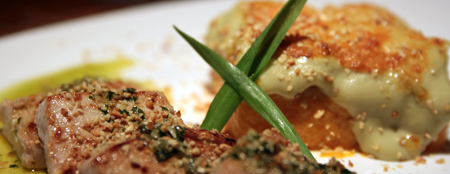
One of the most charming establishments and with the island's most Brazilian menu is, believe it or not, a Korean's dream come
true. Born in Seul, Hea Soun Shin - dearly called Rê, by locals and friends - moved still as a child to São Paulo, where she worked
with the entire family on the bustling commerce of Rua 25 de Março. After years as a vendor, Hea managed to raise enough money to take
her first vacations, in 1997, to the long-dreamed archipelago of Fernando de Noronha. As a scuba diving aficionado, she returned many
times as a tourist, until she decided to leave the largest metropolis in Latin America to live once and for all in heaven, where she
has been for eight years and met her husband, a fisherman, to start a family.
She started making dinners and small gatherings, until her desire to build her own business spoke louder. "I like to eat everything.
Beef jerky, sirloin, pasta. I created Xica da Silva's first menu by myself, adding dishes that I liked to cook, my personal
trademark", recalls the charming and self-taught Hea. Nowadays, seven years later, the businesswoman can depend on the also
self-taught chef Thiago Silva, her right arm in the kitchen, to whom she passed on much of her knowledge learned by the stove.
The menu's variety is huge, from fish and seafood to salads, pasta and meats. One of the most requested menus by tourists (who
make up almost 80% of her clientele) is, believe or not Argentine sirloin (R$ 125), which serves two and includes a black bean cream,
egg farofa (sautéed manioc flour), rice, fries and vinaigrette. It fights for attention with the house hit, the Mixed Fish (R$ 69).
The dish - which represents the house in many gastronomical festivals - is the season's fish grilled, dabbled in basil sauce and
cashew farofa, and served with pumpkin purée and parmesan gratin. It's to die for. And there's no danger of the establishment running
out of this dish. When they're out of fish, Hea send her own husband out to sea to catch and serve it fresh.
The seafood symphony (R$ 169) can only get better with chef Thiago Freita's creative touches. Here, fish, shrimp, lobsters, squid,
and oysters are drenched in white wine and followed by sauté potatoes and the "biquinho" pepper rice, which is a must and quite the
hit in the menu created by them for Ginga Bar. The fillet mignon cutlets (R$ 72) lie in a bed of arugula and are served with shitake
rice and mashed potatoes gratin. As the chef suggests, close the dinner with the house Brownie, which has a fluffier texture similar
to regular cake and comes with vanilla ice cream.
As an Asian with a Brazilian twist, Hea doesn't forget to serve the traditional feijoada (bean and meat stew) for lunch on
Sundays. Xica da Silva has two pleasant ambiances: an external porch and an air-conditioned dining hall, where clients can check
a carefully planned wine chart, with selections from Brazil, Argentina, Italy, Portugal, and Chile, as well as champagnes and
sekts.





 breakfast
breakfast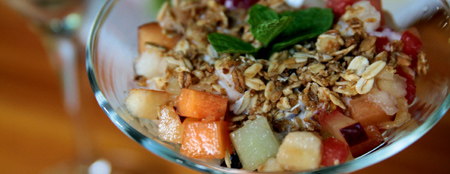
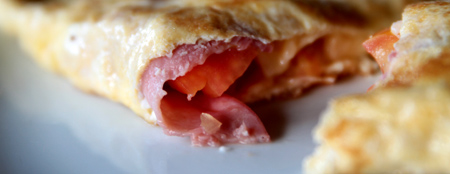


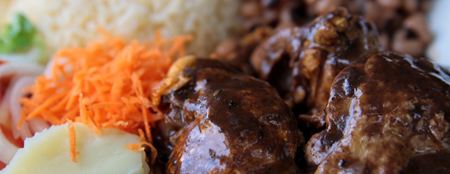
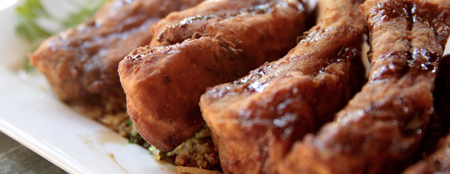
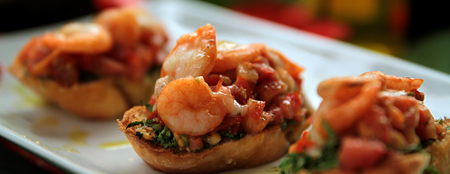
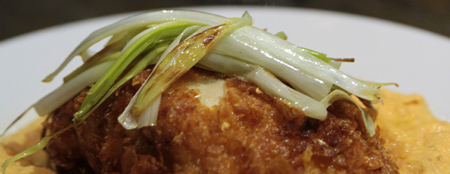
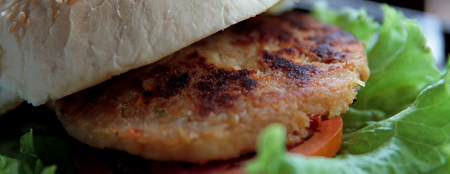
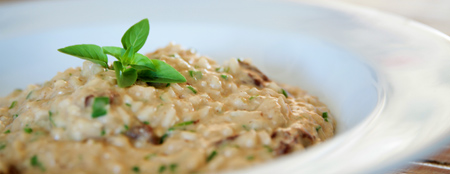




 service
service